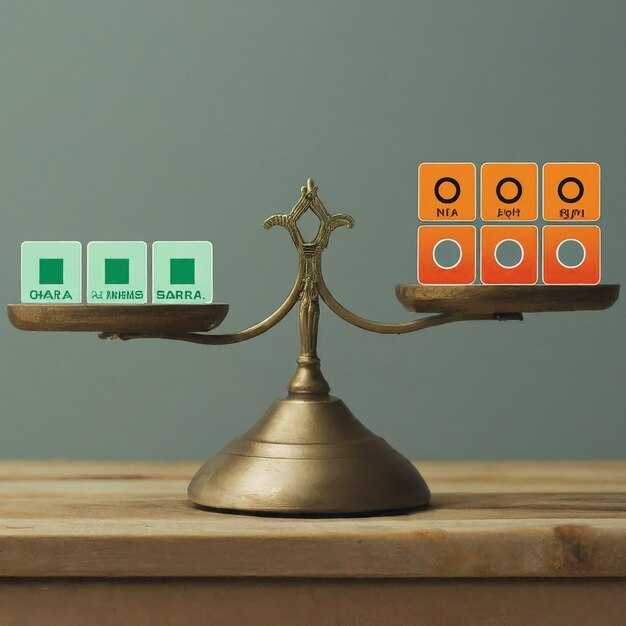Recommendation: define three objective criteria for choices in intimate partnerships, run a 7‑day micro‑test, and log outcomes daily. Start by writing what matters about commitment, communication and boundaries; figure baseline responses, then consciously compare outcomes to those criteria. This approach reduces second‑guessing, makes patterns visible, and frees decision-making from purely emotional cycles so partners would see concrete change within two weeks.
Look for practical signals rather than impressions: wanting approval more than mutuality, waiting for reassurance before speaking, repetitive arguments that never resolve, and long conversations that circle without decisions. If theres a pattern of being drained after interactions, if persons involved avoid accountability, or if theres silence in moments that used to feel secure, these are signals linked to specific causes: attachment history, learned avoidance, inconsistent feedback, and habitual behaviors. Map those causes to observable behaviors and types of responses to identify what is true versus assumed.
Consequences manifest quickly: trust erosion spills outside the couple into friendships and work, leaving doubts that come back during high‑stakes moments. Over months, hesitation places a wedge between intention and action, making last attempts at repair less effective. When partners still hesitate to commit or to be vulnerable, decisions get postponed, momentum is lost, and small incidents compound into ongoing patterns of being emotionally drained. Track what is happening in discrete moments to prevent escalation.
Practical next steps: schedule two weekly micro‑experiments (simple requests or boundary tests), keep a 30‑day journal with timestamps and facts only, and review entries with a trusted friend or clinician to figure out bias. Use role‑play to rehearse responses, name three situations that grew doubt in the past, and create replacement behaviors to counteract those triggers. Emphasize trusting through evidence: measure outcomes, bring conversations back to agreed criteria, and rebuild a sense of being secure in the place where decisions are made rather than reacting to outside noise.
Practical Signs and First Steps When You Doubt Your Relationship Judgments
Start a 14-day interaction log: record date, time, exact words said, who initiated contact, physical reactions (heart rate, stomach tightness), and a simple trust-safety score 1–5; review entries every 7 records to gain measurable patterns and spot if a behavior does repeat.
If a partner’s remark hurts or creates anxious body symptoms, impose a 48-hour cooling boundary: send a brief message to tell them that processing time is needed, then reduce contact to essential logistics only; count how many times this period is required in a month and use that number as a decision metric.
Create a concrete checklist of signs to track: avoids responsibility, minimizes concerns in hearing of friends, gaslights by saying it wasnt serious, repeats broken promises more than three times, or downplays past harm; mark any major escalation as requiring immediate safety steps.
Document exact phrases that invalidate experience (for example “anyones reaction would be the same”) and request written clarification of intentions; written replies become an источник for later review and help recognise patterns behind common excuses.
Protect emotional health with micro-goals: cut shared time by 30% for one month, increase social contact with two trusted peers, and schedule two therapy sessions; measurable targets: fewer anxious episodes per week, improved sleep, clearer appetite signals, and a growing sense that being okay is possible.
If comments imply someone is unworthy or constantly told they “shouldn’t” speak up, list three personal accomplishments and dates to counter the toxic narrative; this forms evidence to regain confidence that feelings are true and not invented.
Compare current dynamics to previous adult relationships and family models: note frequency of repetition and whether the partner mirrors patterns from childhood or previous adulthood partners; therapy can map attachment styles and reveal what’s behind defensive behavior.
Prepare an escalation plan if boundaries are violated: gather essential documents, identify a safe place to go, notify one trusted contact, and set a realistic timeline for exit options; treat unbreakable promises that are broken as a red flag for unhealthy long-term bets like marriage without change.
Use quick triage tests here: ask for a specific change, give a two-week window, then measure follow-through; if the partner avoids proof or does only surface-level adjustments, prioritise safer options and choose actions aligned with personal goals for a healthier outcome.
How to spot exact moments you doubt your choices and keep a quick log
Create a pocket log with a five-field free form: timestamp, short trigger (one sentence), mode (defensive/engaged/withdrawing), emotions (1–10 plus one word), action taken. Keep the form under 20 characters per field so entries take <10 seconds.
Flag exact moments by three objective signals: physiological (heart racing, sweating), verbal (partner says or recently said a phrase that stops logical thought), behavioral (withdrawing, walking away, protecting space). Track types of triggers separately – factual contradiction, romantic pressure, or boundary-testing – to avoid lumping everything into one blurry category.
Adopt a one-line code system for speed: T=14:05; S=”late text”; M=withdrawal; E=6; A=”said: ‘I’m fine'”. Store entries in a timestamped list so the brain’s raw reactions are recorded before junk narratives are processed. Review entries at least weekly: mark facts, strip assumptions, then build notes based on processed facts rather than on emotions alone. That later review starts building a system that makes responses better and more controlled, protecting balance between instinct and reason.
Two micro-examples to copy into a notes app or paper along the day:
“10:42 • boss says ‘rethink’ • mode=protecting • emotions=7 • action=paused” – fact recorded; no extra rumination.
“21:15 • partner said ‘couldnt handle this’ during romantic talk • mode=withdrawing • emotions=8 • action=walking out” – flags possible abusive language and the ones that trigger shutting down.
Use the log to detect patterns: which moments are usually going to waste on rumination, which come from genuine safety risks, and which difficulties come from misprocessed memories. Knowing these facts frees cognitive capacity and helps the whole decision-making system of themselves move toward balance instead of repeating the same controlled/uncontrolled modes.
Small daily behaviors that reveal weakened self-trust and how to respond in the moment
Act immediately: label the impulse, take three slow diaphragmatic breaths, then use a 2‑minute rule – observe sensations and evidence before reacting.
| Behavior | Moment response (exact script / action) | Why it matters | Micro‑practice (2–5 min) |
|---|---|---|---|
| Apologizing for small requests (“Sorry, is it okay?”) | Script: “I deserve to ask that.” Pause 3 seconds. Wait for an answer; do not add justification. | Frequent apologies create a pattern of self‑devaluation and signal earlier wounds. | Daily: state one genuine request aloud in front of a mirror for 3 days. |
| Withdrawing from plans at the last minute, leaving texts unread | Action: text one short clarification: “Need 10 min; will walk if that works.” Then take a 5‑minute grounding walk. | Withdrawing creates smoke screens that block connecting and gives others no chance to offer support. | Practice: accept one low‑stakes invite per week and stay 30 minutes. |
| Waiting for someone else to decide or give permission | Script: “I can choose this; I’ll decide in 10 minutes.” Set timer; pick an option and notice feels. | Chronic waiting trains the brain to outsource choices and reduces sense of being stable in decisions. | Exercise: make three small decisions daily (meal, route, song) without consulting anyone. |
| Comparing a situation to past major events and avoiding action | Question to ask: “Is this the same event or a different stimulus?” List two objective differences aloud. | Comparing inflates threat; it treats current environment as if past wounds are inevitable causes of present outcomes. | Write one column of differences vs similarities for one scenario; re‑read before reacting. |
| Replaying conversations and assuming negative intent | Script: “What happened, exactly?” Name facts, not interpretations. If needed, open a short conversation: “Can I check what you meant by X?” | Rumination trains neural pathways toward fear; direct clarification reduces huge imagined harms. | Use a five‑sentence log: facts, feeling, need, possible action, next step. |
| Overpreparing to avoid spontaneous decisions | Rule: allow one 10‑minute unplanned choice each day. If fear appears, note it and proceed anyway. | Perfectionism and overplanning create an illusion of safety but reduce opportunities for a healthier, adaptive response. | Set a weekly “yes” window: accept the first viable invite that appears. |
If an impulse to withdraw or compare emerges, treat it as a signal, not a decree: name the sign, check one piece of objective data, then choose one small experiment that gives new information. For example, rather than waiting for anyone else to give permission to speak in a conversation, state a short boundary, observe the reaction, and note whether reality aligns with fears.
Data‑driven habits: track five instances over two weeks where a micro‑response (label, breathe, 2‑minute rule, short experiment) changed the outcome; count how many times the feared major negative event actually happened. That ratio trains the brain to accept possible outcomes rather than catastrophize.
Use support strategically: name a trusted person who knew past wounds and can hold perspective; send one sentence update instead of long explanations. That creates stability in the environment and reduces comparing to worst‑case scenarios.
In difficult moments, use a single grounding stimulus sequence: 5 senses (5‑4‑3‑2‑1), two slow breaths, a 30‑second walk. This lowers acute fear, calms the brain, and opens an opportunity to respond from clearer judgement rather than reactive avoidance.
Immediate impacts on communication, intimacy, and boundary enforcement

Name one specific communication behavior and state a short, scripted boundary to use the next time a conflict arises; this reduces insecurities and trains the nervous system to stop hiding feelings while practicing directness and active listening.
Silenced comments or attempts to hide discomfort create a background pattern: people stay quiet to avoid escalation, continuing to accumulate small grievances. That accumulation turns into resentment, because micro-decisions that go unspoken compound and partners hold back, making ordinary interactions complex and brittle.
Intimacy suffers when someone feels violated or afraid to speak; the emotional balance tilts toward distance. Signals that would normally feel true get clouded – still affectionate gestures can feel like smoke when trusting is tentative. Attempts to change closeness without addressing insecurity act like chains, constraining spontaneity and making physical and emotional closeness less available.
Boundary enforcement collapses into either passivity or overreaction: passive people become suspicious of any request, active enforcers may escalate conflicts that could have been resolved by calm, personal limits. The immediate result is more negative cycles – worse fights, partners feeling judged, and a background sadness that makes normal triggers feel larger and more triggering than they should.
Actionable fixes: rehearse three short lines to satisfy a boundary (acknowledge, state limit, give consequence); check background triggers tied to a parent model or past area of hurt; track which behaviors become automatic and name them aloud; practice holding small decisions in private to rebuild confidence; schedule brief check-ins focused on listening, not persuasion. These steps are practical, measurable, and liberating compared with continuing passive patterns that only make matters worse.
Identifying types of trust issues: self-doubt, partner mistrust, and learned distrust with short examples
Start by naming the pattern observed and apply one targeted technique for seven days to collect measurable signs of change.
-
Self-doubt – Definition: internal negative appraisal that makes routine decisions feel difficult and slows action.
Short example: after a job interview they second-guess every answer, making simple follow-ups feel like junk ideas; since similar feedback from peers went unprocessed in childhood, choices arent allowed to click and days pass without progress.
Concrete steps: list three past wins in the same area, practice a 10-minute decision walk (time-boxed), log evidence back into a folder so memories can be processed rather than turned into fear; treatment options: CBT techniques, behavioral experiments, brief exposure to small risks.
-
Partner mistrust – Definition: active suspicion toward an intimate partner after a triggering event or betrayal.
Short example: after a missed call at night they feared betrayal, then kept checking messages; making accusations instead of asking leaves the other person unheard and creates a hostile environment that plays on old trauma.
Concrete steps: set agreed check-ins, allow transparency practices along with boundaries, create a shared log for facts (who was where, what event occurred) and allow time for both sides to be heard; treatment options: couples therapy, behavioral contracts, clear systems for rebuilding predictability.
-
Learned distrust – Definition: generalized mistrust formed from repeated relational failures in family, school or community systems.
Short example: since caregivers were inconsistent, they expect others to abandon plans, so social invitations arent accepted and opportunities to share go unused; this pattern remains automatic and is reinforced by peers who modeled withdrawal.
Concrete steps: map a timeline of key events that shaped expectations, use trauma-informed therapy to process memories, practice small allowed social experiments (showing up for five minutes then leaving), and record days when avoidance didnt win; long-term treatment: attachment-focused therapy and group work to rebuild secure connection.
- Signs to monitor: repeated turning to self-criticism, inability to share plans, frequent judgmental thoughts, feeling betrayed by neutral events, and physical anxiety when trust is offered.
- Assessment tools: rate intensity of suspicion each day, count how many times an opportunity to connect was passed, log who was heard or unheard in conversations and who went back to old patterns.
- Practical rules: allow one micro-test per week, stay with data not stories, avoid cataloguing every perceived slight as proof, and refuse to treat each interaction as final.
- Support structure: involve trusted peers, select therapists trained in psychological trauma treatment, align with community systems that care about continuity, and create an accountability area to keep progress visible.
- Outcome targets (30–90 days): more days where choices click, fewer accusatory messages sent, more moments of feeling secure, and truly shared decisions instead of acting from fear.
Practical micro-steps to rebuild judgment: decision drills, confidence anchors, and feedback loops
Do a 5×2 decision drill daily: set two 5-minute sessions per day; each session pick one binary choice, write Option A/Option B, list three reasons, predict outcome and rate confidence 1–5. Keep a clean log with date/time and a short note on body sensations and anxiety level. After 48–72 hours mark whether prediction matched reality; calculate a weekly accuracy number (%) and aim to move that number up by 10 percentage points over three weeks.
Turn micro-decisions into data points: track 30 decisions per week as a target for statistically meaningful patterns. Record chance estimates (0–100%) for outcomes, then compare predicted chance vs actual result; a consistent gap signals a projection or pattern that needs correction. Use simple spreadsheets or a journal column labeled “projecting” to flag when projecting motives onto others, including co-workers or partners.
Create confidence anchors that reset physiology: a 10-second body scan, three clean breaths, a 30-second power posture, and a single-keyword cue (choose one word only). Anchor sequence: breath → posture → cue. Practice anchor three times daily and immediately before any choice that matters; this reduces getting pushed by outside emotion and lowers the anxiety spike that often becomes a destroyer of clear decisions.
Use social micro-feedback loops: after low-risk choices, talk to one trustworthy person (friend, co-worker) and ask two focused questions – what did you notice? would you have acted differently? – then log their validation or dissent. Limit feedback requests to a number (2–3) per week to avoid over-reliance on outside validation. Communicating concise requests produces actionable external data without turning every decision into a group project.
Apply a 3-question heuristic before deciding: 1) What is the real cost of being wrong? 2) What is the simplest alternative that still moves the project forward? 3) Am I projecting fears from past relationships or being pushed by others? Mark answers and later compare against outcomes to recognize recurring biases or a particular fear pattern.
Design a weekly review ritual: pick one evening, allocate 30 minutes, sort decisions into three buckets – accurate, lucky, learning. For each “learning” item write a 1-sentence lesson and one micro-step to change the pattern next time. Repeat this review monthly to see development trends and to balance risk tolerance vs caution. Keep the language specific: avoid vague entries like “did okay”; write exact behaviors that put the decision off-balance.
7-day implementation order: Day 1 – baseline log 10 small choices; Day 2 – install anchor and practice 3x; Day 3 – set feedback buddies and ask one question; Day 4 – run 5×2 drills and compute weekly accuracy; Day 5 – apply 3-question heuristic to three real choices; Day 6 – compile external feedback and note validation vs projection; Day 7 – do the weekly review and decide two concrete steps for next week. Repeat cycles until patterns diminish, confidence grows, and self-empowerment replaces paralyzing fears.
Metrics to monitor: accuracy percentage, average confidence rating, number of times anchors used, instances of projecting onto others, and frequency of anxiety spikes during decisions. Articles and research on decision science suggest measurable improvement within 4–8 weeks with disciplined practice; many young adults report noticeable change because consistent micro-steps reduce the weight of second-guessing and help people get happy with practical progress.
When to seek professional support or consider ending the relationship: decision checkpoints and questions
Seek professional support immediately if physical safety is threatened, suicidal ideation appears, sustained substance relapse jeopardizes shared living, or emotional abuse occurs three or more times per month despite explicit boundaries.
Use these measurable checkpoints: pattern persistence beyond six months after attempts at repair; refusal to attend at least eight joint or individual therapy sessions; repeated boundary violations after being asked on three separate occasions; escalation to threats, stalking, or financial control. Document dates and examples in a secure place; that record increases chance of effective legal or therapeutic intervention.
Ask targeted assessment questions aloud or in therapy: Have apologies been followed by measurable development in behavior? Can someone enforce a boundary without escalation? Do they accept responsibility rather than gaslighting? Is sadness or anger reactivated by partner actions more often than neutral interactions? If answers are mostly negative, consider a safety plan and separation timeline.
Evaluate underlying drivers: trauma histories, untreated mental health diagnoses, addiction, and learned patterns formed in childhood. The brain responds to triggers; past experiences can be reactivated and make current reactions feel unmanageable. Include trauma‑informed clinicians in assessments; their expertise in neural patterns and consciousness helps figure out realistic prospects for change.
Prioritize concrete resources and skills training: emergency contacts, financial separation steps, custody planning, and individual therapy focusing on boundary enforcement, emotion regulation, and communication. Practical skills reduce worrying and sadness and help anyone walking through separation preserve mental health.
Decision thresholds for considering permanent separation: repeated cruelty, persistent threats to safety, clear evidence partner believes the other is unworthy of basic respect, or refusal to engage in sustained change work for longer than a year. If most attempts at repair fail and progress is absent, ending the relationship is a valid, protective option.
Community factors matter: assess the impact on friendships and family; share plans with at least two trusted contacts; unbreakable isolation increases risk. If social supports are compromised or partner actively sabotages friendships, escalate precautions and seek legal advice.
Specific questions to ask a clinician or attorney: What is the realistic chance of behavioral change based on documented patterns and treatment readiness? Where can temporary housing and financial assistance be placed? Which safety steps should be taken immediately? These targeted inquiries move discussion away from abstract worry and toward executable solutions.
Reflective prompts for personal clarity: Where did current patterns actually form; what would living free of chronic walking‑on‑eggshells feel like; what does a healthy partnership want to share and build? Focusing on desired outcomes clarifies whether staying offers growth or only prolonged reactivation of harm.
Final checkpoint: if attempts to learn new interaction skills, including couples work and individual therapy, produce negligible change after a preagreed period, or if violence escalates, initiate exit planning immediately. That plan should include safe transport, secure documents, backup finances, and named allies who can act quickly.


 What Happens When You Don’t Trust Your Judgment in Relationships – Signs, Consequences & How to Rebuild Confidence">
What Happens When You Don’t Trust Your Judgment in Relationships – Signs, Consequences & How to Rebuild Confidence">

 21 Practical Ways to Deal with a Man with Commitment Issues">
21 Practical Ways to Deal with a Man with Commitment Issues">
 How to Be a Better Conversationalist – 10 Practical Tips to Improve Your Conversation Skills">
How to Be a Better Conversationalist – 10 Practical Tips to Improve Your Conversation Skills">
 Why 80% of Relationships Fail – Causes, Warning Signs & How to Fix Them">
Why 80% of Relationships Fail – Causes, Warning Signs & How to Fix Them">
 10 Ways to Avoid Being Single Forever | Dating Tips">
10 Ways to Avoid Being Single Forever | Dating Tips">
 7 Game-Changing Tips to Survive Separation — Expert Divorce Coach Advice">
7 Game-Changing Tips to Survive Separation — Expert Divorce Coach Advice">
 Top 10 Reasons Men Commit and Stay Committed | Relationship Advice">
Top 10 Reasons Men Commit and Stay Committed | Relationship Advice">
 Feeling Never Good Enough? End Self-Doubt & Build Confidence">
Feeling Never Good Enough? End Self-Doubt & Build Confidence">
 8 Reasons Men Stay in Touch with Exes — What It Really Means">
8 Reasons Men Stay in Touch with Exes — What It Really Means">
 Why He Pulls Away – What Men Think and Why They Return">
Why He Pulls Away – What Men Think and Why They Return">
 Balance Theory Explained – Definition, Examples & Applications">
Balance Theory Explained – Definition, Examples & Applications">